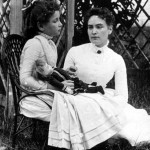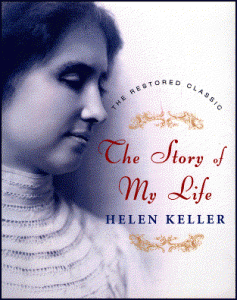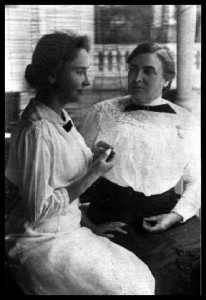 By Scott T. Allison and George R. Goethals
By Scott T. Allison and George R. Goethals
In our Heroes Book, we discuss the remarkable story of Karl Merk, a German farmer who ten years ago lost both his arms in a farming accident. In July 2008, Merk was the recipient of the first double-arm transplant, conducted in a 15-hour surgery at the Munich University Clinic by a team of 40 doctors, nurses, and anesthesiologists. Today, after three years of intensive physical therapy, Merk has regained significant use of his arms and is acquiring more function every day.
Merk and the medical team that is treating him are an example of companionate heroes — people who are dependent on each other for their heroic qualities to surface. Usually, but not always, companionate heroes consist of a person who needs considerable help to survive, and another person who has the perfect skill-set to assist him or her.
Perhaps the most famous companionate heroes of the 20th century were Helen Keller and Anne Sullivan. When Keller was 19 months old, she contracted an illness that left her blind and deaf.  She was imprisoned in a dark, silent world, and no one in her family could reach her. Keller’s parents hired 20-year-old Anne Sullivan to perform the seemingly hopeless task of educating Keller. Sullivan was the perfect person for the job. Visually impaired herself, Sullivan was empathetic, patient, resourceful, and persevering.
She was imprisoned in a dark, silent world, and no one in her family could reach her. Keller’s parents hired 20-year-old Anne Sullivan to perform the seemingly hopeless task of educating Keller. Sullivan was the perfect person for the job. Visually impaired herself, Sullivan was empathetic, patient, resourceful, and persevering.
Sullivan first tried to teach Keller basic language skills by using her finger to spell words on Keller’s hand, but Keller did not understand that each object had a different name. A breakthrough occurred on April 5, 1887. Sullivan led Keller to a water pump and splashed water on one of Keller’s hands while spelling the word water on the other hand. Keller later recalled, “We walked down the path to the well-house, attracted by the fragrance of the honey-suckle with which it was covered. Someone was drawing water and my teacher placed my hand under the spout. As the cool stream gushed over one hand she spelled into the other the word water, first slowly, then rapidly. I stood still, my whole attention fixed upon the motions of her fingers. Suddenly I felt a misty consciousness as of something forgotten, a thrill of returning thought, and somehow the mystery of language was revealed to me.”
Sullivan next tackled Keller’s atrocious table manners. Keller had the habit of eating with her hands, grabbing from the plates of everyone at the table, and throwing a temper tantrum if anyone tried to stop her. Sullivan punished Keller’s tantrums by refusing to “talk” with Helen by spelling words on her hands. Soon Keller developed impeccable manners and learned how to perform everyday tasks such as getting dressed and brushing her hair.
 Thanks to Sullivan, Keller was transformed into a bright, curious, lovely young woman who was destined to make a positive mark on the world. The bond between Keller and Sullivan grew into a beautiful friendship that lasted for 49 years.
Thanks to Sullivan, Keller was transformed into a bright, curious, lovely young woman who was destined to make a positive mark on the world. The bond between Keller and Sullivan grew into a beautiful friendship that lasted for 49 years.
Keller was the first deaf and blind person in America to graduate from college, and she later became a prolific author of many books and articles on a variety of social and political topics. Most importantly, Keller became a world-famous advocate for people with disabilities. The 1962 film The Miracle Worker inspired millions of people with its story of Keller’s triumph over disability and Sullivan’s selfless devotion to helping Keller fulfill her vast potential.
“Helen Keller was a fighter,” said Keller’s grandniece, Keller Thompson-Johnson. “She didn’t hide from her problems. She knew that to become a better person and to show other people that they too could overcome their disabilities, she had to be a fighter herself.” During her lifetime, Helen Keller was consistently ranked near the top of almost every Most Admired list. In addition, Anne Sullivan deservedly acquired the reputation as a legendary teacher. Keller and Sullivan are forever linked as heroes who brought out the best in each other.
Below is a rare clip of Anne Sullivan explaining how she taught language skills to Helen Keller.